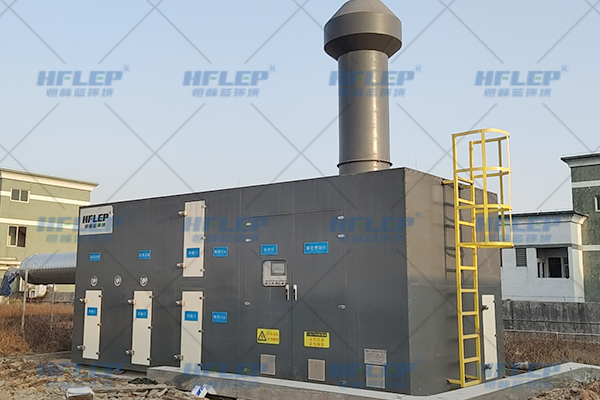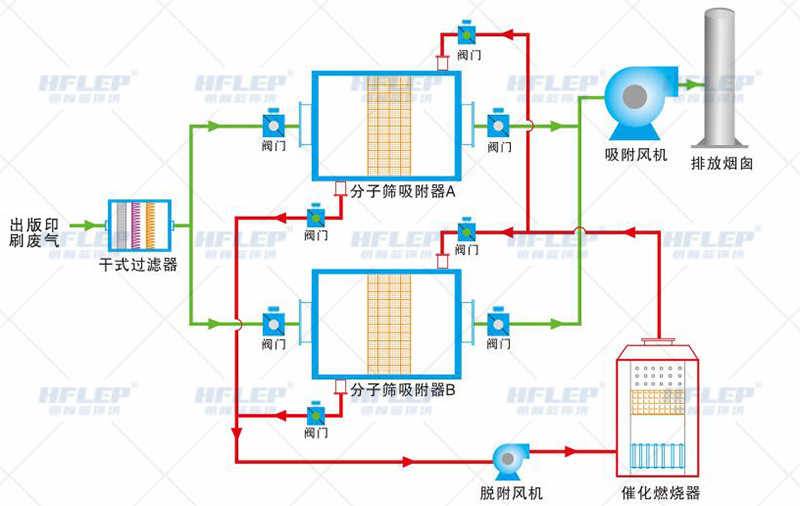Experienced Manufacturers
Production plant area of more than 10,000 square feet, more than 100 people construction team.
 Hotline
Hotline

(Physical Engineering Case Studies)
Introduction to the Publishing and Printing Industry
Publishing and printing refers to a printing method in which text and images are edited, designed, printed, and distributed publicly. It takes paper as the main printing material, and its printed materials such as newspapers, books, periodicals, magazines, albums, promotional materials and other related colour printing and large quantities of printed matter. Publishing printing can also be said to be conventional printing, is the most contact with the designer of the printing design business categories, this type of printing is now mostly lithographic printing (offset printing) based.
Publishing and printing industry pollution hazards
Publishing and printing hazards are mainly in the printing materials used in the ink and curing agent mixture of volatile organic compounds, while in the printing process of drying positions also exist in the distribution of organic compounds, printing workers as a result of breathing all day long gas containing toxic organic compounds, greatly impairing the health of workers, greatly affecting the kidneys, lung function, skin dryness, and even cause dermatitis, damage to the nervous system and so on.
Publishing and Printing Solution Overview
For the publishing and printing industry VOCs treatment technology, now in line with environmental emission requirements, and play a cost-effective treatment technology, is the use of combustion method of treatment technology is more economical and energy-saving effective. The use of dry filters + reduced wind concentration + catalytic combustion combination of governance, governance can meet the emission requirements after the standard!

Publishing and printing management process
This device process is: first through the three-stage dry filter to remove 99% of the particles in the dusty gas, so that the organic matter is completely clean, but also to increase the operating efficiency and service life of the late equipment. Separation of organic gases into the zeolite turn concentration or molecular sieve adsorption concentration of organic waste gas low concentration into high concentration, large air volume conversion of small air volume to reduce the principle of concentration, when the adsorption concentration reaches the required spontaneous combustion requirements, and finally through electric heating to warm up the high temperature of 100-180 degrees Celsius gas, desorption regeneration, desorption of down the use of catalytic furnace of the high concentration of catalytic furnace, with the help of catalysts to make the organic waste gas in the lower starting temperature for flameless combustion, so that the late equipment operating efficiency and service life. With the help of catalyst, the organic waste gas will be flamelessly burned under lower ignition temperature, so that the organic waste gas will be decomposed into non-toxic carbon dioxide and water vapour.
Other treatment process technology
Low concentration and small air volume of publishing and printing waste gas can be used: spray tower, uv photolysis purifier, activated carbon adsorption and other single or multiple combinations of processes for treatment;
High concentration of small air volume of publishing and printing waste gas can be used: pretreatment + zeolite molecular sieve + catalytic combustion, pretreatment + zeolite molecular sieve + RTO regenerative incinerator, a single catalytic combustion device or a single RTO regenerative incinerator and so on;
High concentration and large air volume publishing and printing waste gas can be used: pretreatment + zeolite rotor concentration + catalytic combustion or pretreatment + zeolite rotor concentration + RTO thermal storage incinerator and so on.
Reason for choice

Production plant area of more than 10,000 square feet, more than 100 people construction team.

A number of engineers and technicians, most of whom have more than 10 years of experience and have worked on numerous projects.

Adoption of the latest domestic and international treatment technology, with high treatment efficiency.

According to the actual needs of the project, free to customise the corresponding exhaust gas treatment solutions, all regions of the country package to meet the emission standards.

Passed the third level of construction enterprise qualification and a number of technical patents...

1000+ project experience, more than 100 industry partners, complete environmental protection qualification.
Contact - Ways
Contact information
Catalytic combustion machine is a dry filter + adsorption de...

Activated carbon adsorption and desorption + CO catalytic co...

Zeolite rotor concentration + RTO regenerative incinerator c...

Zeolite rotor concentration + CO catalytic combustion proces...

CO catalytic combustion + TO direct combustion furnace proce...

For low concentration and low air volume of waste gas treatm...


(Physical Engineering Case Studies)
Introduction to the Publishing and Printing Industry
Publishing and printing refers to a printing method in which text and images are edited, designed, printed, and distributed publicly. It takes paper as the main printing material, and its printed materials such as newspapers, books, periodicals, magazines, albums, promotional materials and other related colour printing and large quantities of printed matter. Publishing printing can also be said to be conventional printing, is the most contact with the designer of the printing design business categories, this type of printing is now mostly lithographic printing (offset printing) based.
Publishing and printing industry pollution hazards
Publishing and printing hazards are mainly in the printing materials used in the ink and curing agent mixture of volatile organic compounds, while in the printing process of drying positions also exist in the distribution of organic compounds, printing workers as a result of breathing all day long gas containing toxic organic compounds, greatly impairing the health of workers, greatly affecting the kidneys, lung function, skin dryness, and even cause dermatitis, damage to the nervous system and so on.
Publishing and Printing Solution Overview
For the publishing and printing industry VOCs treatment technology, now in line with environmental emission requirements, and play a cost-effective treatment technology, is the use of combustion method of treatment technology is more economical and energy-saving effective. The use of dry filters + reduced wind concentration + catalytic combustion combination of governance, governance can meet the emission requirements after the standard!

Publishing and printing management process
This device process is: first through the three-stage dry filter to remove 99% of the particles in the dusty gas, so that the organic matter is completely clean, but also to increase the operating efficiency and service life of the late equipment. Separation of organic gases into the zeolite turn concentration or molecular sieve adsorption concentration of organic waste gas low concentration into high concentration, large air volume conversion of small air volume to reduce the principle of concentration, when the adsorption concentration reaches the required spontaneous combustion requirements, and finally through electric heating to warm up the high temperature of 100-180 degrees Celsius gas, desorption regeneration, desorption of down the use of catalytic furnace of the high concentration of catalytic furnace, with the help of catalysts to make the organic waste gas in the lower starting temperature for flameless combustion, so that the late equipment operating efficiency and service life. With the help of catalyst, the organic waste gas will be flamelessly burned under lower ignition temperature, so that the organic waste gas will be decomposed into non-toxic carbon dioxide and water vapour.
Other treatment process technology
Low concentration and small air volume of publishing and printing waste gas can be used: spray tower, uv photolysis purifier, activated carbon adsorption and other single or multiple combinations of processes for treatment;
High concentration of small air volume of publishing and printing waste gas can be used: pretreatment + zeolite molecular sieve + catalytic combustion, pretreatment + zeolite molecular sieve + RTO regenerative incinerator, a single catalytic combustion device or a single RTO regenerative incinerator and so on;
High concentration and large air volume publishing and printing waste gas can be used: pretreatment + zeolite rotor concentration + catalytic combustion or pretreatment + zeolite rotor concentration + RTO thermal storage incinerator and so on.